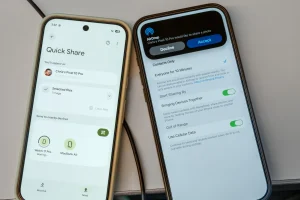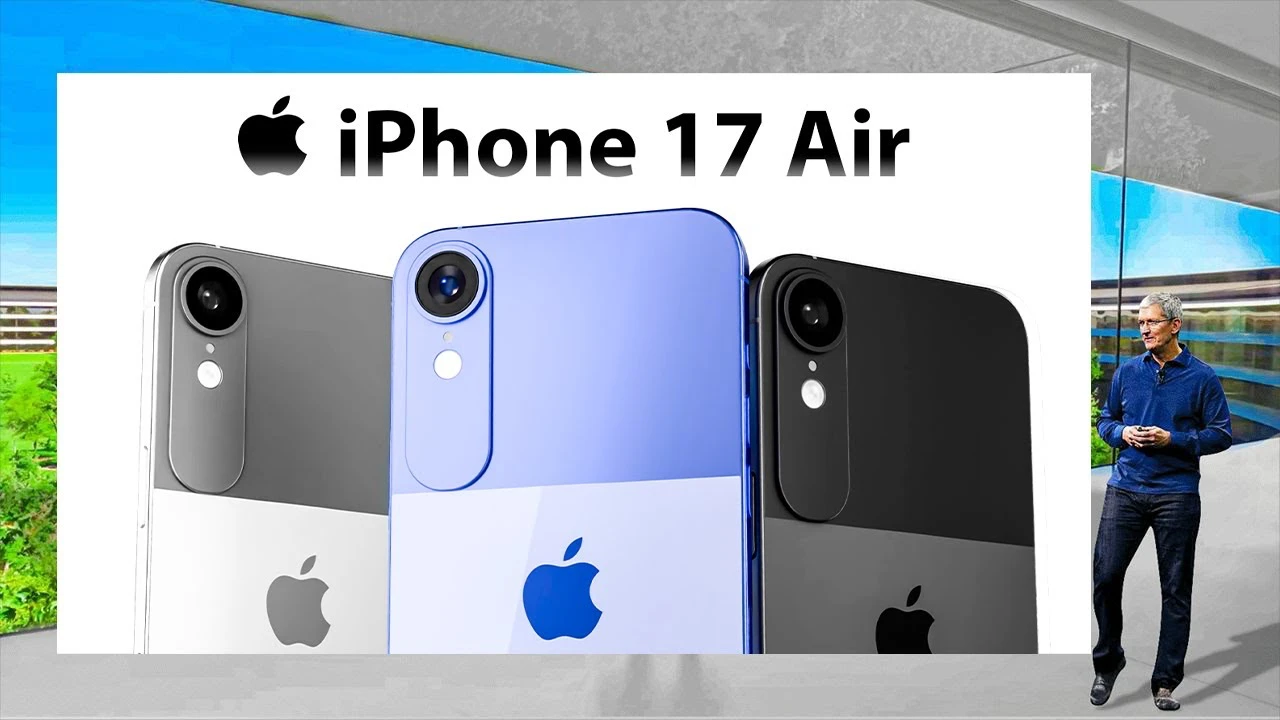Google’s November Pixel drop leans into practical improvements, and the headline feature finally breaks a wall that has irritated users for more than a decade. Pixel 10 devices can now send files directly to iPhones, iPads and Macs without workarounds, third-party apps or compressed messaging hacks. It is a small feature on paper, but it smooths out one of the most familiar frustrations in mixed-device environments. The update lands quietly, but it makes everyday sharing less of a negotiation for anyone juggling Android and iOS.
The tone of the update is clear. Nothing experimental. Nothing dramatic. Just steady quality-of-life fixes that make the Pixel easier to live with, especially for households, teams or creators who move between ecosystems. And because file sharing is one of the oldest sticking points between Android and iOS, this one improvement ends up carrying more weight than many larger system upgrades.
Quick Share Meets AirDrop
Google built the new sharing feature into the Pixel 10 family through its Quick Share system, which now recognises Apple devices when AirDrop is switched to “Everyone for 10 minutes.” Once an iPhone, iPad or Mac enables that discovery mode, a Pixel 10 nearby sees it automatically through Quick Share. There is no cloud routing behind the scenes. Transfers move over a direct peer-to-peer connection, which keeps them fast and sidesteps privacy concerns that sometimes come with server-mediated sharing.

The setup is simple. On the Apple side, the user opens Control Centre, selects AirDrop and toggles the temporary “Everyone for 10 minutes” option. On the Pixel side, Quick Share opens, scans and displays the Apple device as if it were another Android phone. Tap, send, and the file moves across without compression or dropped transfers. Photos, large videos, PDFs and documents all behave the way users expect, which is a noticeable change from the workarounds people relied on before.
Google says it accomplished this without any formal partnership with Apple. The company told multiple outlets that it relied on its own implementation rather than a shared protocol. That explains why the feature works only within the “Everyone” mode, not the “Contacts Only” mode that remains locked behind Apple’s internal system. For now, this capability is limited to the Pixel 10 lineup, with a broader Android rollout expected once stability testing expands.
A Small Feature With Real Everyday Impact
This update lands directly in people’s everyday routines. Mixed-device households are normal now. Offices almost always have a blend of Android and iPhone users. Students, creators and travellers constantly share images, clips or documents across the table. Until now, one of the simplest tasks (sending a file) required switching apps, converting formats or using group chats as a workaround.
Apple has not issued any public statement about the interoperability, and there is no indication of whether it intends to expand or restrict the behaviour. For now, the “Everyone for 10 minutes” mode does exactly what users need. And Pixel owners get a small victory: after years of being walled out, this feels like infiltrating the iOS ecosystem without needing a formal handshake from Apple.
More Than Just File Sharing
The November update also brings a series of smaller but thoughtful improvements across the Pixel lineup. Notification summaries now group conversations in a cleaner way, making it easier to catch up on missed chats without scrolling through a long list of alerts. Scam and spam detection has been expanded, offering clearer warnings when suspicious links or behaviour appear in messaging apps.
General performance tuning rounds off the release. Pixel devices receive smoother animations, better resource management and a few stability fixes that make the software feel more predictable for heavy daily use. These improvements do not attract the same attention as cross-platform sharing, but together they help the system feel more polished.
A Practical Upgrade For Everyday Users
The November drop is not trying to reshape the Pixel ecosystem. It is trying to reduce friction. Cross-platform file sharing removes a pain point people have worked around for years. The smaller additions polish the experience in ways users will notice over time. And the quiet way the update was delivered mirrors its purpose. It does not shout. It simply works.
With or without Apple’s involvement, this update nudges the Pixel into a more flexible place. If future releases continue in this direction, the Pixel experience could become one of the most adaptable in the Android world. For now, the update does what good software should do. It gets out of the way and makes everyday tasks easier.











